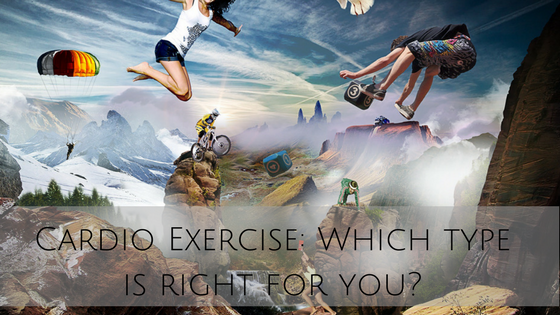[et_pb_section bb_built=”1″ inner_width=”auto” inner_max_width=”1080px”][et_pb_row][et_pb_column type=”4_4″ custom_padding__hover=”|||” custom_padding=”|||”][et_pb_text _builder_version=”4.9.4″ text_text_shadow_horizontal_length=”text_text_shadow_style,%91object Object%93″ text_text_shadow_horizontal_length_tablet=”0px” text_text_shadow_vertical_length=”text_text_shadow_style,%91object Object%93″ text_text_shadow_vertical_length_tablet=”0px” text_text_shadow_blur_strength=”text_text_shadow_style,%91object Object%93″ text_text_shadow_blur_strength_tablet=”1px” link_text_shadow_horizontal_length=”link_text_shadow_style,%91object Object%93″ link_text_shadow_horizontal_length_tablet=”0px” link_text_shadow_vertical_length=”link_text_shadow_style,%91object Object%93″ link_text_shadow_vertical_length_tablet=”0px” link_text_shadow_blur_strength=”link_text_shadow_style,%91object Object%93″ link_text_shadow_blur_strength_tablet=”1px” ul_text_shadow_horizontal_length=”ul_text_shadow_style,%91object Object%93″ ul_text_shadow_horizontal_length_tablet=”0px” ul_text_shadow_vertical_length=”ul_text_shadow_style,%91object Object%93″ ul_text_shadow_vertical_length_tablet=”0px” ul_text_shadow_blur_strength=”ul_text_shadow_style,%91object Object%93″ ul_text_shadow_blur_strength_tablet=”1px” ol_text_shadow_horizontal_length=”ol_text_shadow_style,%91object Object%93″ ol_text_shadow_horizontal_length_tablet=”0px” ol_text_shadow_vertical_length=”ol_text_shadow_style,%91object Object%93″ ol_text_shadow_vertical_length_tablet=”0px” ol_text_shadow_blur_strength=”ol_text_shadow_style,%91object Object%93″ ol_text_shadow_blur_strength_tablet=”1px” quote_text_shadow_horizontal_length=”quote_text_shadow_style,%91object Object%93″ quote_text_shadow_horizontal_length_tablet=”0px” quote_text_shadow_vertical_length=”quote_text_shadow_style,%91object Object%93″ quote_text_shadow_vertical_length_tablet=”0px” quote_text_shadow_blur_strength=”quote_text_shadow_style,%91object Object%93″ quote_text_shadow_blur_strength_tablet=”1px” header_text_shadow_horizontal_length=”header_text_shadow_style,%91object Object%93″ header_text_shadow_horizontal_length_tablet=”0px” header_text_shadow_vertical_length=”header_text_shadow_style,%91object Object%93″ header_text_shadow_vertical_length_tablet=”0px” header_text_shadow_blur_strength=”header_text_shadow_style,%91object Object%93″ header_text_shadow_blur_strength_tablet=”1px” header_2_text_shadow_horizontal_length=”header_2_text_shadow_style,%91object Object%93″ header_2_text_shadow_horizontal_length_tablet=”0px” header_2_text_shadow_vertical_length=”header_2_text_shadow_style,%91object Object%93″ header_2_text_shadow_vertical_length_tablet=”0px” header_2_text_shadow_blur_strength=”header_2_text_shadow_style,%91object Object%93″ header_2_text_shadow_blur_strength_tablet=”1px” header_3_text_shadow_horizontal_length=”header_3_text_shadow_style,%91object Object%93″ header_3_text_shadow_horizontal_length_tablet=”0px” header_3_text_shadow_vertical_length=”header_3_text_shadow_style,%91object Object%93″ header_3_text_shadow_vertical_length_tablet=”0px” header_3_text_shadow_blur_strength=”header_3_text_shadow_style,%91object Object%93″ header_3_text_shadow_blur_strength_tablet=”1px” header_4_text_shadow_horizontal_length=”header_4_text_shadow_style,%91object Object%93″ header_4_text_shadow_horizontal_length_tablet=”0px” header_4_text_shadow_vertical_length=”header_4_text_shadow_style,%91object Object%93″ header_4_text_shadow_vertical_length_tablet=”0px” header_4_text_shadow_blur_strength=”header_4_text_shadow_style,%91object Object%93″ header_4_text_shadow_blur_strength_tablet=”1px” header_5_text_shadow_horizontal_length=”header_5_text_shadow_style,%91object Object%93″ header_5_text_shadow_horizontal_length_tablet=”0px” header_5_text_shadow_vertical_length=”header_5_text_shadow_style,%91object Object%93″ header_5_text_shadow_vertical_length_tablet=”0px” header_5_text_shadow_blur_strength=”header_5_text_shadow_style,%91object Object%93″ header_5_text_shadow_blur_strength_tablet=”1px” header_6_text_shadow_horizontal_length=”header_6_text_shadow_style,%91object Object%93″ header_6_text_shadow_horizontal_length_tablet=”0px” header_6_text_shadow_vertical_length=”header_6_text_shadow_style,%91object Object%93″ header_6_text_shadow_vertical_length_tablet=”0px” header_6_text_shadow_blur_strength=”header_6_text_shadow_style,%91object Object%93″ header_6_text_shadow_blur_strength_tablet=”1px” box_shadow_horizontal_tablet=”0px” box_shadow_vertical_tablet=”0px” box_shadow_blur_tablet=”40px” box_shadow_spread_tablet=”0px” vertical_offset_tablet=”0″ horizontal_offset_tablet=”0″ z_index_tablet=”0″]
I’ve always been a fan of cardio exercise – or just plain old ‘cardio’ if you’re one of the cool kids (which you totally are if you’re reading this). It’s a time when (before I became a mother) I could plug in, check out, get the good ol’ endorphins flowing, and feel amazing after an hour of sweating it out – whatever ‘it’ was.
As an athlete and trainer, over the years I’ve been asked many times about what kind of cardio is best, how long, what pace, etc. What I’ve always encouraged people to do is to just get moving. Start where you’re at, anything is better than nothing, and it all depends on your goals.
Below are some tips and encouragement to help you not only get moving, but to also give you an idea of where you might like to push yourself.
Walking
If you’re starting at “cardio zero,” walking can be an excellent place to begin. It’s something we do anyway, and pretty much all you need are your feet and a good pair of shoes. If you want to throw in some music or a captivating podcast then grab your favorite device and some headphones and you’re all set. If you do better with some accountability and support, and chatting makes the time more enjoyable, then find a friend and get going.
A word about walking – be intentional about what you do in your movement. There is a difference between lumbering around, unaware, mentally disconnected from your body, letting momentum do most of the work, and being tuned in with what I call a “mind-body connection”.

What I mean by this is an intimate awareness of the muscles you’re using. This involves thinking about how they’re feeling, how you’re using them, and being aware of their work and contraction.
This also means being aware of your “body in space.” Think about your posture – how is your body stacked? The average human head weighs about 12 pounds, about as much as a bowling ball. If you’re walking with your head tilted forward, chin lowered toward your chest for example, you’re throwing your entire alignment out of whack.
A helpful way to think about this is to imagine a string with a weight on the end of it that drops down through your chest and runs the length of your body. Now, shoulders back, chin up, and imagine pulling that string up so your chest rises and your entire torso and body straighten out with your energy focusing up and outward. Cool, right?
Now, standing nice and straight and tall and ready to do something amazing for yourself, pull those abs in tight, and start taking intentional steps. Feel your foot strike heel first, and the muscles in your legs and glutes contracting to propel you into the next step. Give those glutes a good squeeze as you roll from the ball of your foot onto your toes and off the ground to start the next movement. Much different than just flopping around and “getting through” the walk, right? Who knew there could be so much to walking?
This principle goes for all types of exercise really, but it often gets missed when it comes to something like walking which seems instinctively simple.
Low Impact or “Fat Burning”
Walking can be considered low impact and fat burning, however, in this category, I’m referring to the next level up in the context of intensity and heart rate. This type of cardio gets labeled “fat-burning” (all exercise burns fat, really) because it’s the primary type of fuel your body is tapping into.
*Side note – this subject can get fairly complicated, and for the sake of simplicity I won’t go into a ton of detail about fuel sources and heart rate zones. Please do see below, though, for a discussion of heart rate and know that for this range of cardio you should be on the lower end of your target heart rate zone.
With this level of cardio you should break a sweat, but be able to hold a conversation. I really enjoy this type of exercise because once you get used to it, you can do it for a long time and you can fit in some good reading, catch up on some binge TV watching, or partake in whatever other form of checking out you enjoy while getting your sweat on.

Cardio machines are typically the best way to do this kind of exercise and by that I mean ellipticals, stationary bikes, stair masters, and the plethora of contraptions out there these days to help people get moving. Again, it’s less about which machine you choose to use and more about the intensity of your pace. I find that using different machines to do this kind of cardio keeps it interesting and is a good way to keep your exercise routine from getting stagnant.
A word about stagnancy in exercise… The key to continuing to improve physically, and staying engaged mentally, is keeping your body on its toes. By this I mean don’t do the same thing all the time. Even if it’s working for you, it likely won’t work as well after a while and you’ll become bored. You need to mix things up in order for your body to keep responding and to tend to the mental aspect of exercise as well.
The average person sticks with an exercise routine for about six months, and often the reason for quitting is cited as boredom and routine. Avoid this pitfall and keep things interesting. If you run out of ideas, consult a trainer or a friendly athlete happy to chat about what they love to do, such as myself.
Interval Training
This type of cardio refers to exertion at a challenging pace for a set period of time followed by dropping the intensity way down for a set period of time so that your body can recover. One minute “on,” one minute “off,” for example. Rinse, repeat.
This can be effective in a few different ways…
- When you’re not used to cardio at all and you can’t “go” for very long periods yet. Start with shorter periods, recover, go again, etc.
- When you’re ready to up your intensity to the next level. Go for set periods at that ‘next level’ of intensity then drop back down to recover, repeat, etc.
- When you’re in awesome cardio shape and want to keep improving this is an excellent way to mix things up and add some variety to your training.
Interval training has been identified as one of the most efficient and effective ways to improve your cardiovascular abilities. On top of that, it’s just a nice way to add some variety to your routine and to experience a change from the usual session of a sustained heart rate over a period of time. You can experiment with pushing your intervals for longer periods and decreasing rest periods to really challenge yourself and keep things interesting.
Cardio Intensive
This type of cardio is what I consider “athlete’s cardio,” meaning it’s not so much about burning fat or trimming down as much as it is about improving performance, endurance, and overall ability to kick ass. I would, however, also welcome beginners who are motivated to push themselves hard and go for it into this category.

Running and cycling are two popular forms of doing this type of exercise. This level of cardio puts you in your higher heart rate range, you’re not necessarily chatting away while doing it, and you are definitely sweating. There can be more of a “mental push” as fatigue sets in more quickly. As a trainer, I rarely recommended this type of cardio to any of my clients as they were typically starting as non-exercisers looking to improve overall health versus athletes looking to improve their performance.
I would also caution anyone starting from “cardio zero” to consult with a doctor before getting in to this kind of training and to be careful to avoid injury from overdoing it too soon without a proper fitness base to start from. Many people will do just great with their health goals without ever doing this kind of cardio.
How Long?
If you’re starting from cardio zero and are fairly out of shape, start with 20 minutes and build from there. “How long” really depends on your fitness goals. I find 40 minutes to be a nice general goal for most individuals just looking to lose some weight and get into better shape.
Personally, I always went with an hour because that’s what I enjoyed doing and what worked for me and my fitness goals, particularly when I was training to do figure and bodybuilding shows and focused on getting my body fat as low as possible. I also had to decrease my cardio length at times to balance the intensity of my weight training and to focus on muscle development versus fat burning, depending on what stage I was in preparation-wise for my next show.
A Word About Heart Rate
I used to be pretty religious about tracking my heart rate during cardio exercise. There is value in monitoring heart rate, such as measuring how fast you’re recovering and thus how you’re improving over time.
For example, take your heart rate immediately upon stopping exercise then at set intervals (I like to do it at one and two minutes post-stopping). Repeat this process after future sessions to measure improvement in your cardiovascular abilities. The better shape you’re in, the faster your heart rate will recover.
Another valuable aspect of measuring heart rate is to make sure that you’re matching your effort with which type of cardio you want to do. If you want to stay low-impact and in your fat-burning range, or if you want to make sure you’re pushing yourself enough, then using heart rate as a reference point can be valuable.
If you’re new to exercise and not as in touch with what your body should feel like at different exertion levels, then this can be a good way to be more analytical about things. Put another way, there can be a difference between perceived effort and actual effort.
I’ve used more descriptive, general terms here to describe heart rate. If you’re interested in target heart rate as it pertains to what type of cardio you’re doing check out this site. It offers a great break down of how to calculate your heart rate as well as your target heart rate zone.
In Conclusion…
This is by no means an all-inclusive list of ways you can do cardio exercise. Mix it up – keep it interesting, and most of all keep it challenging so that your body will respond in the ways you want it to.
Whatever it is you do, just get moving. That’s the important part. The feeling of keeping your body in motion and sweating for a sustained amount of time is… Meditative. And the feeling of being done and honoring yourself that way is… Incredible and so worth it.
[/et_pb_text][/et_pb_column][/et_pb_row][/et_pb_section]

